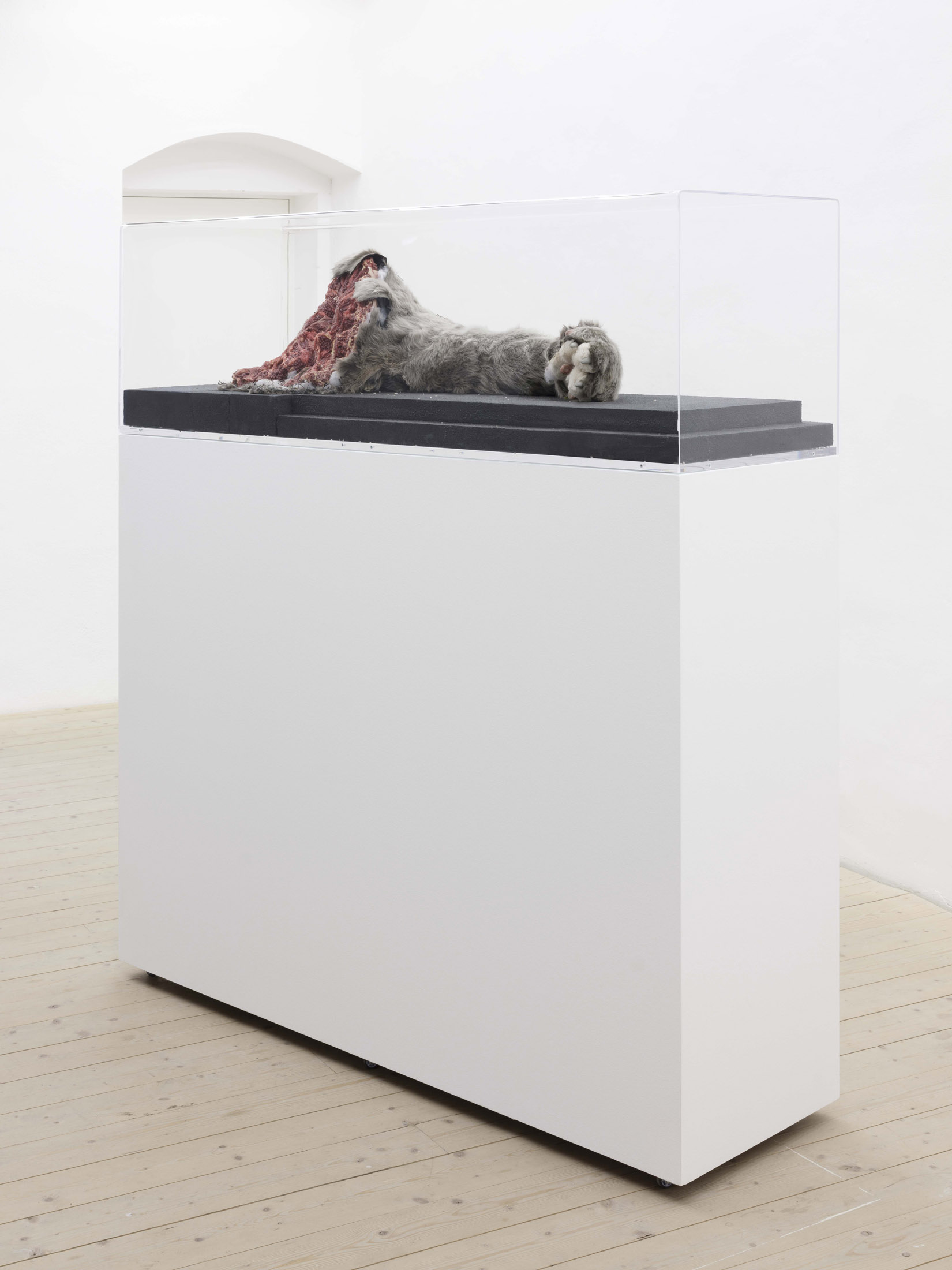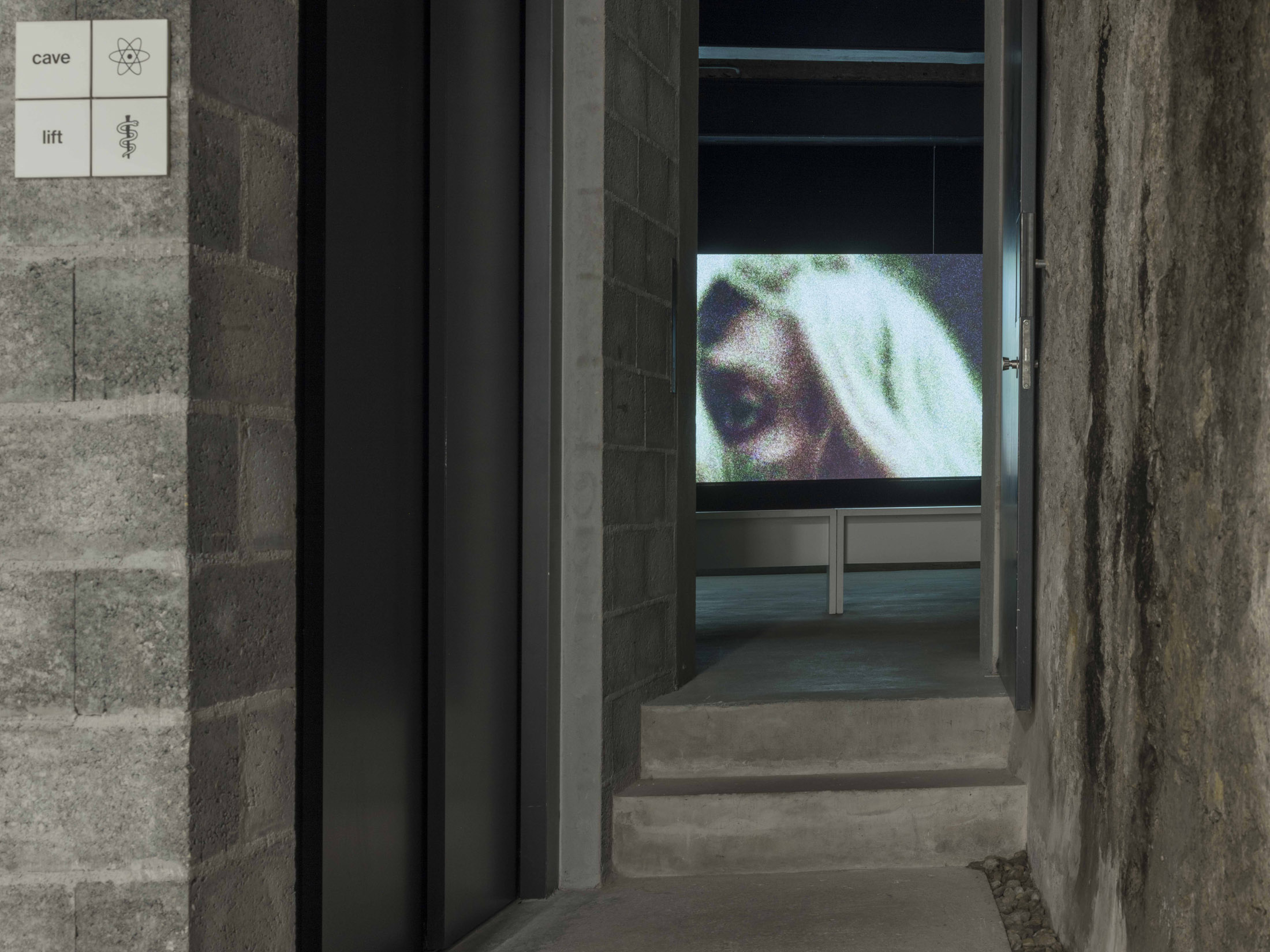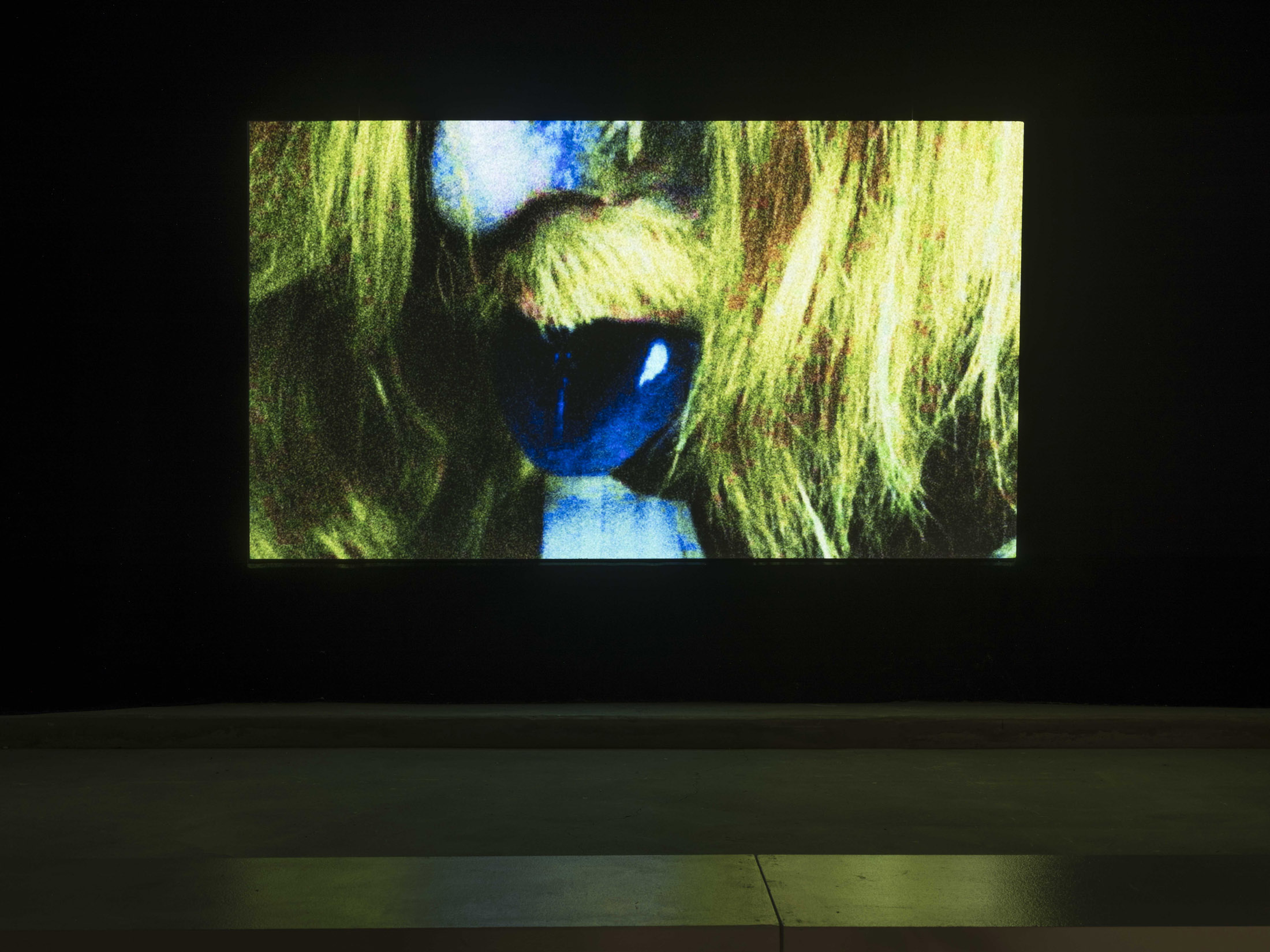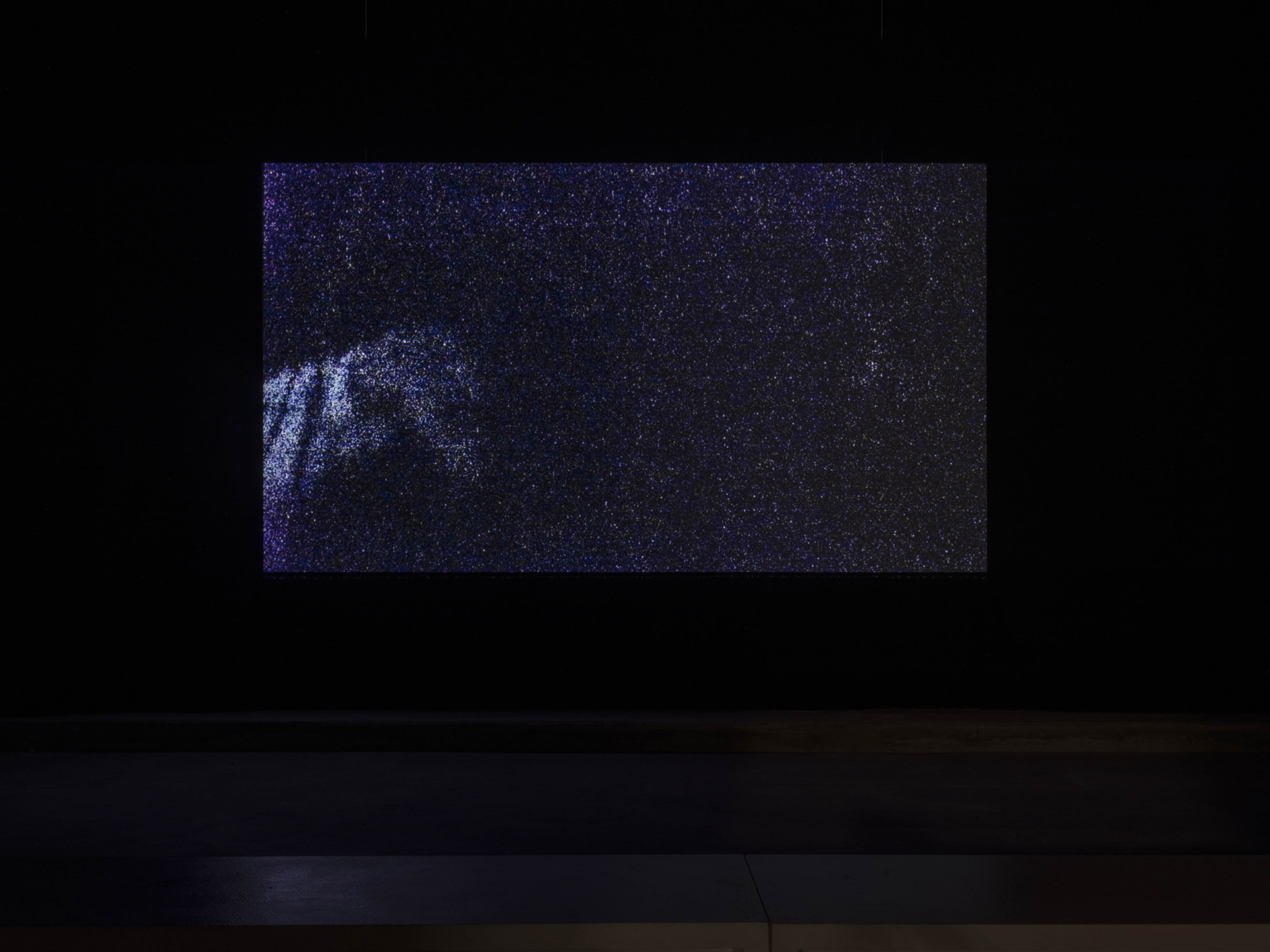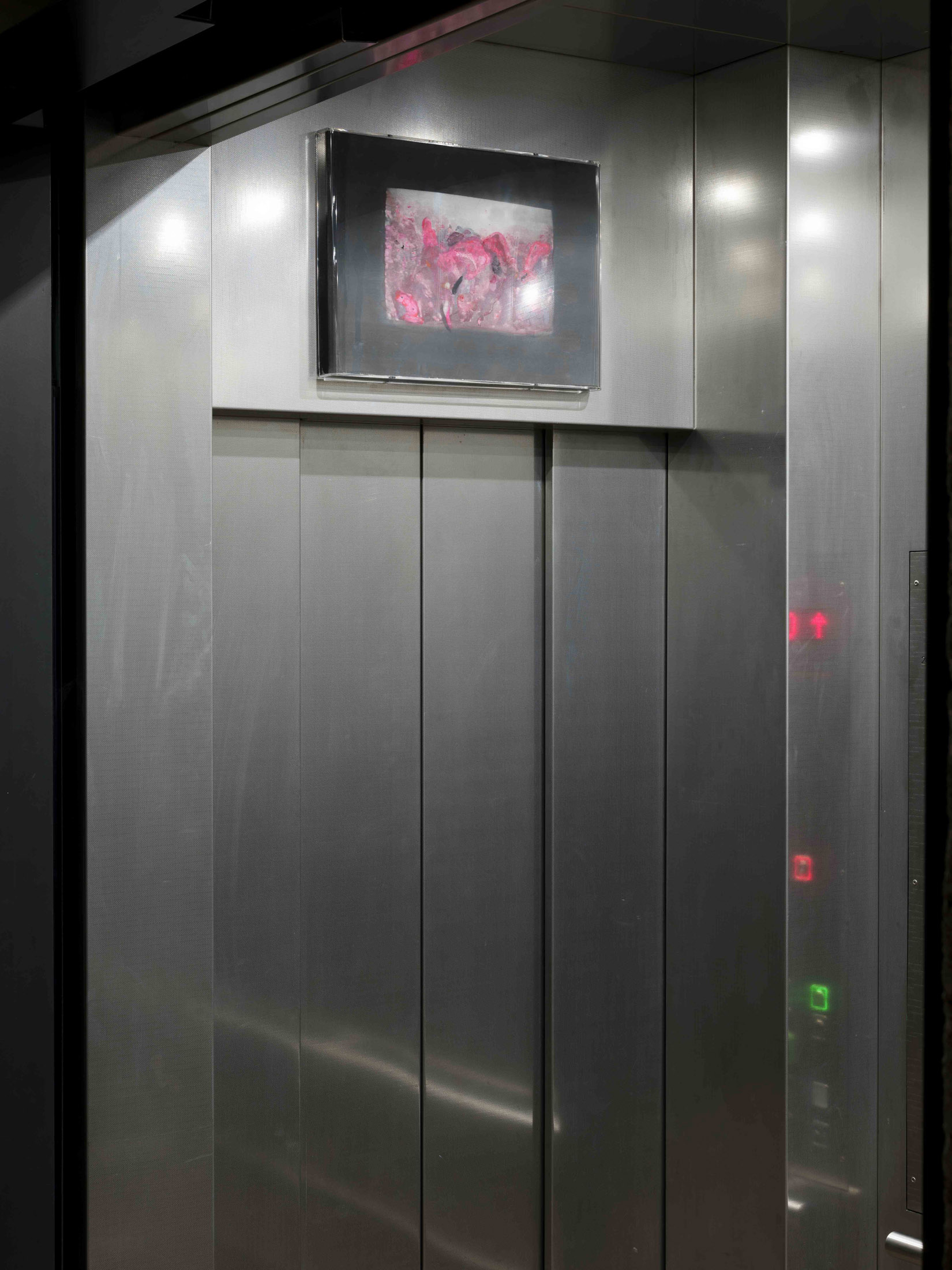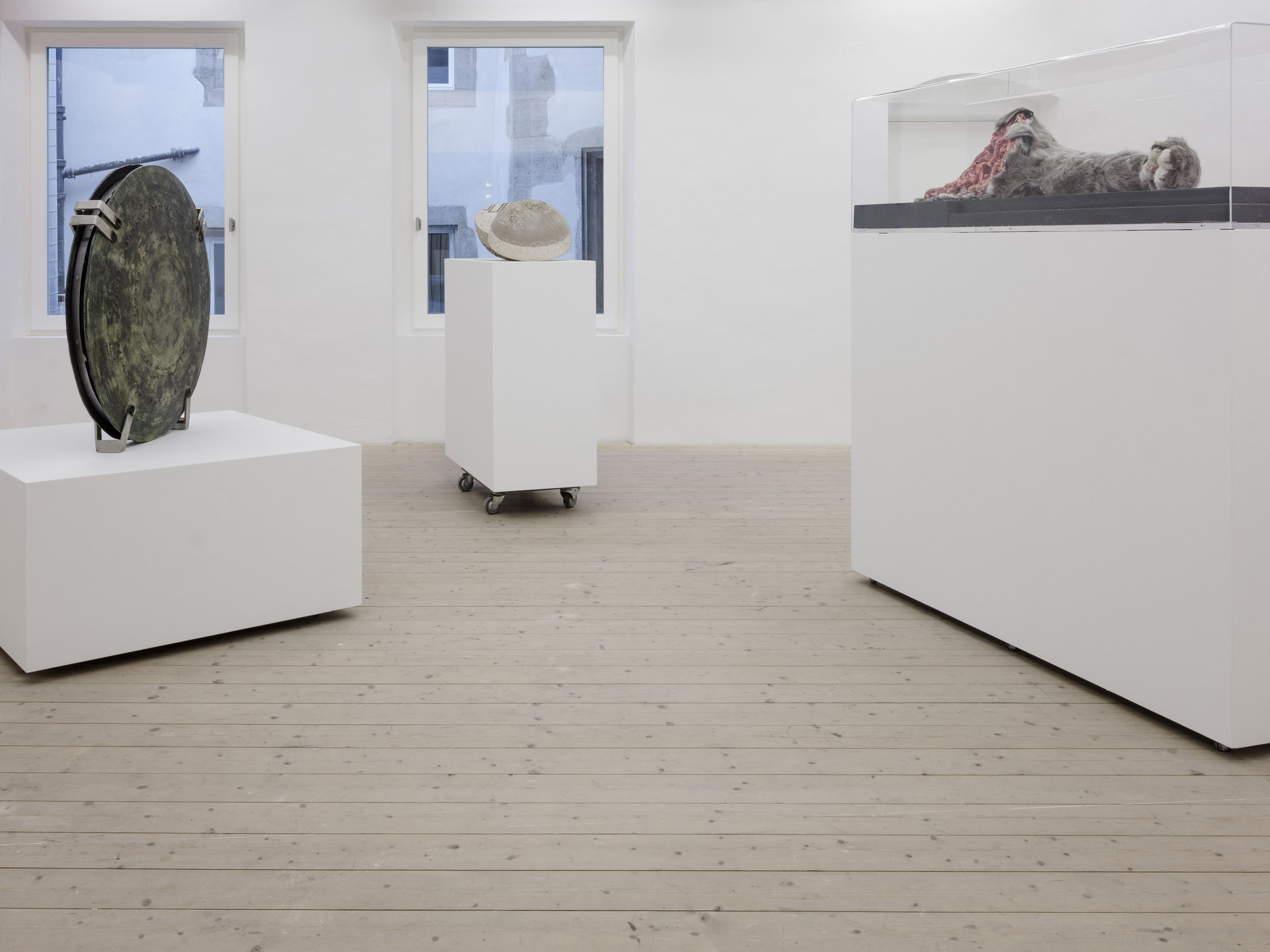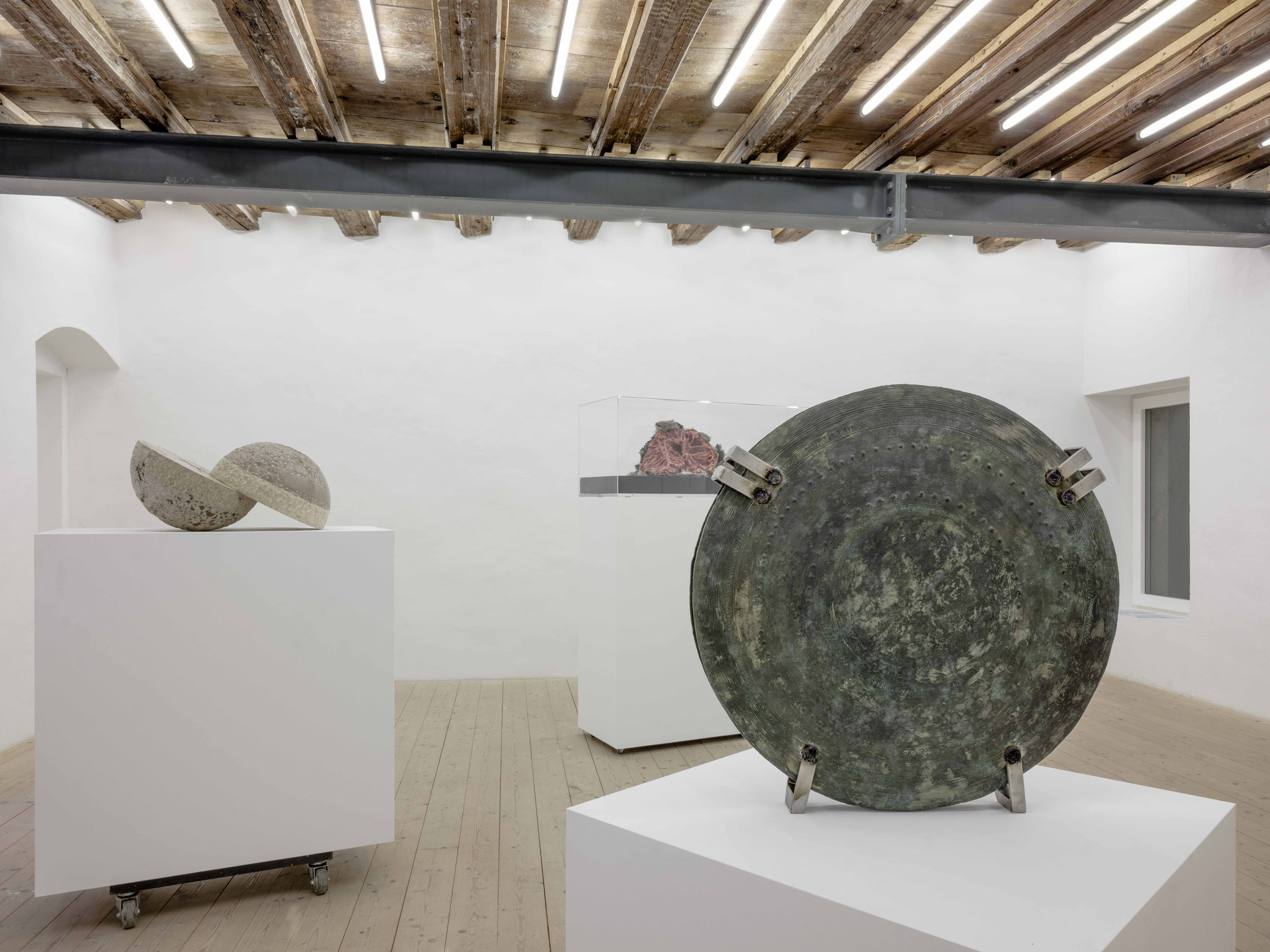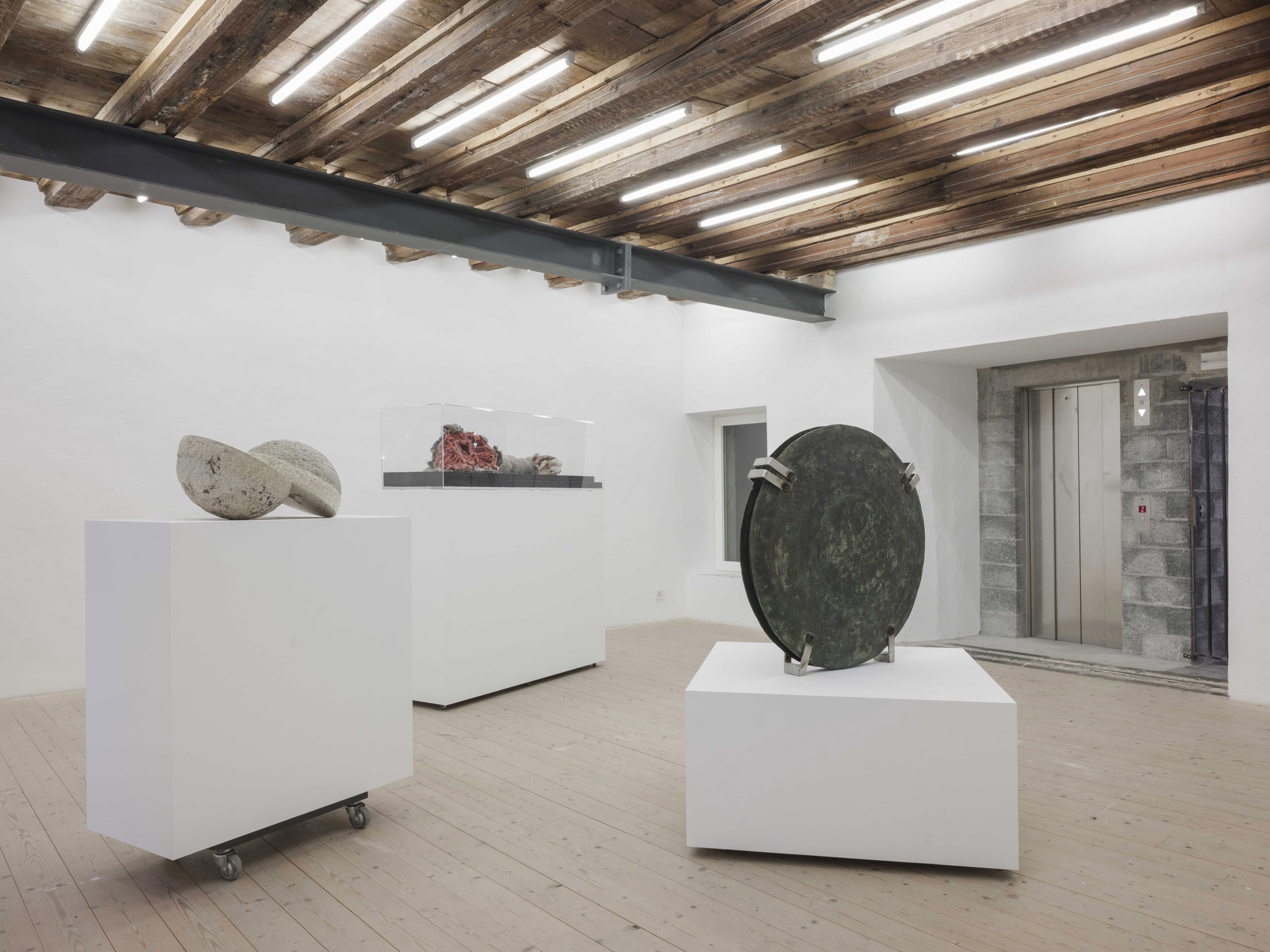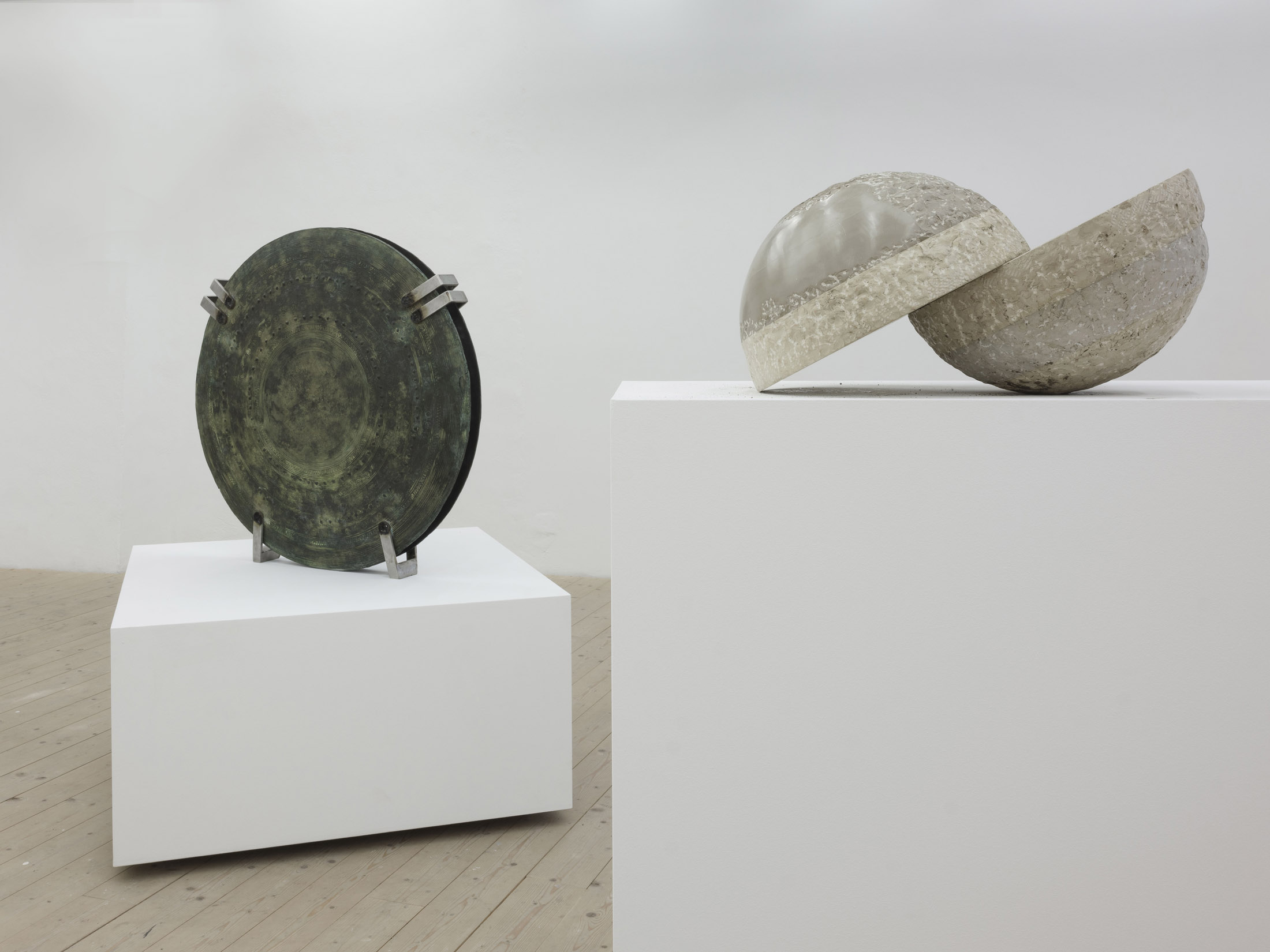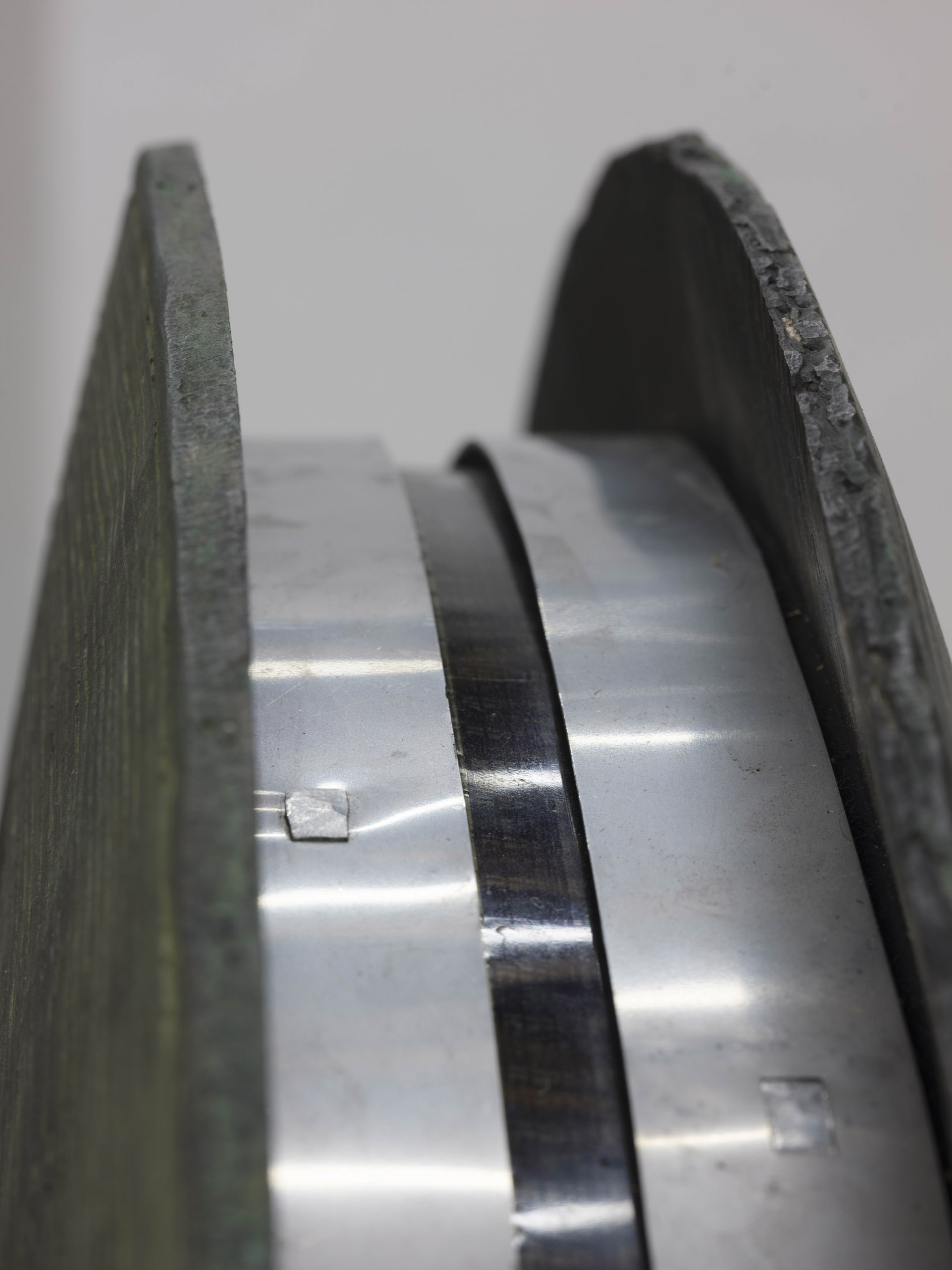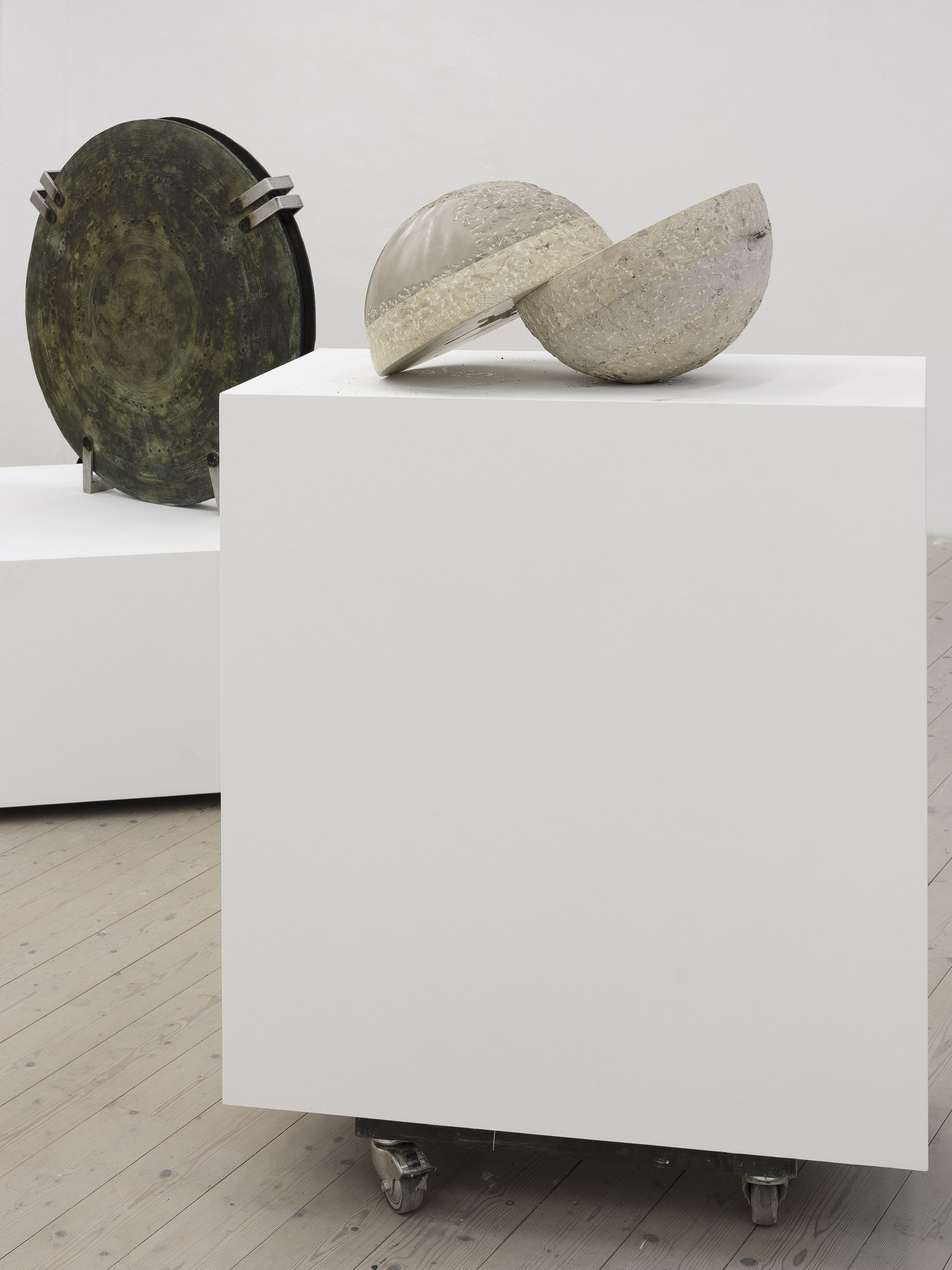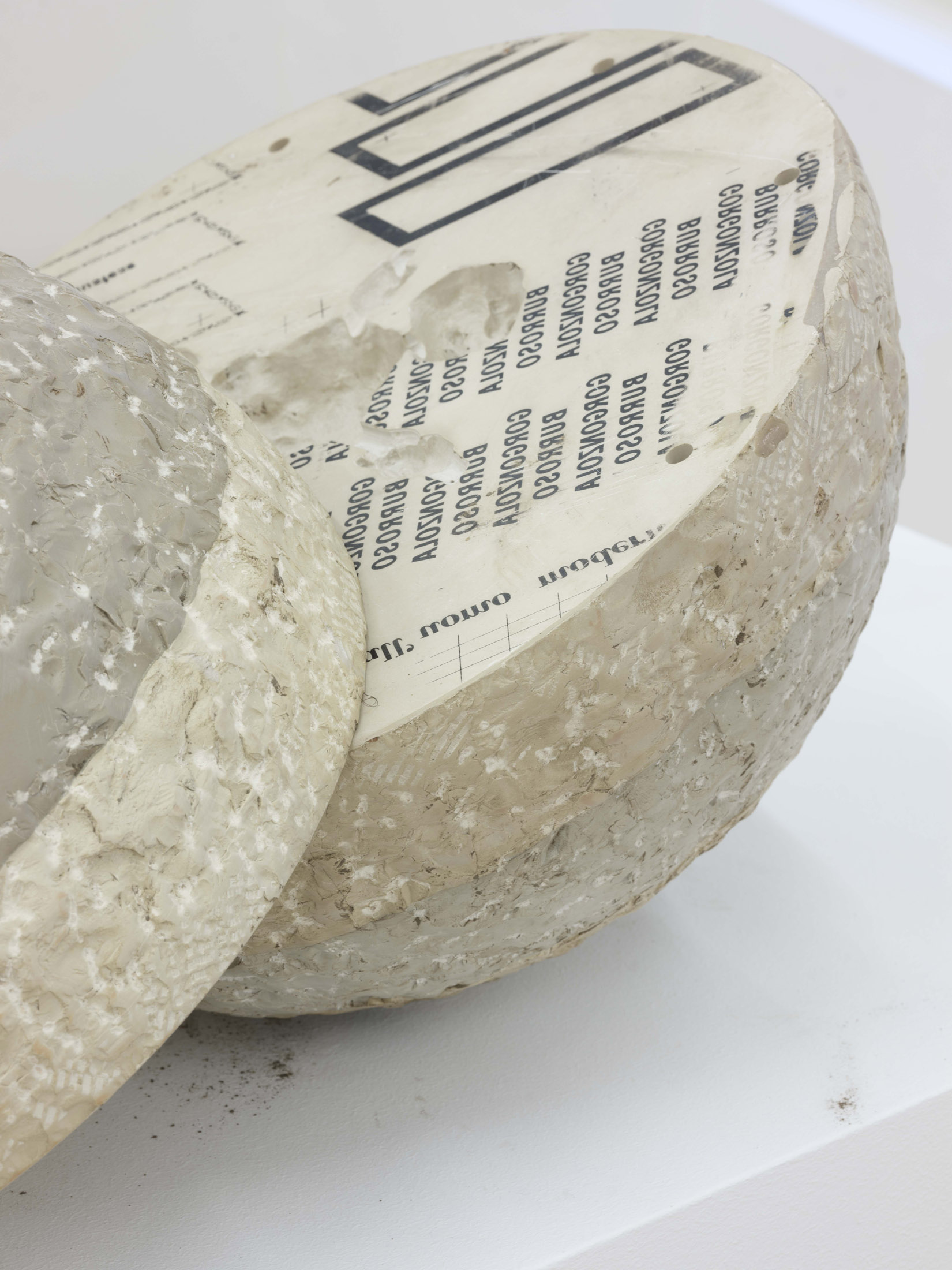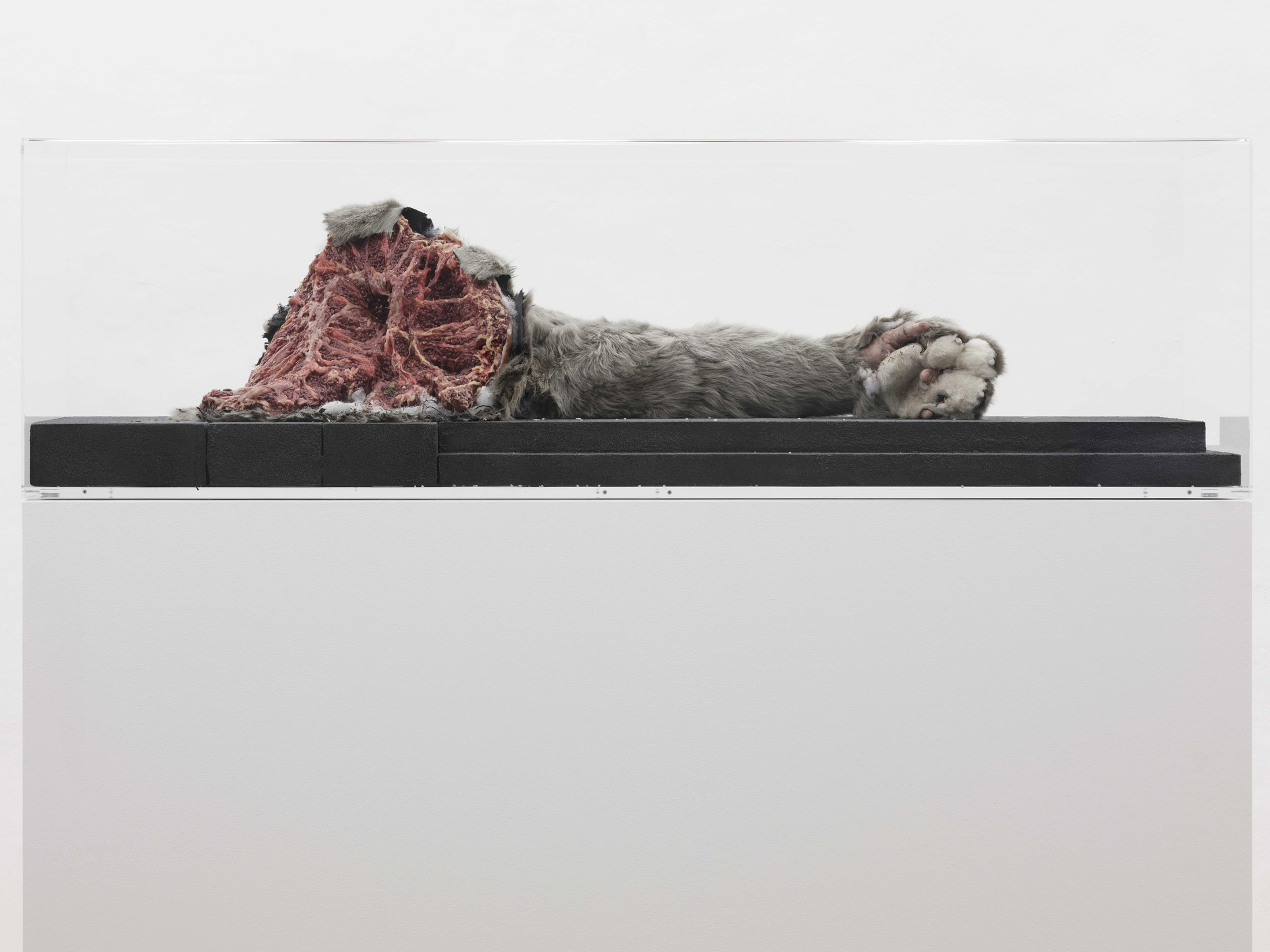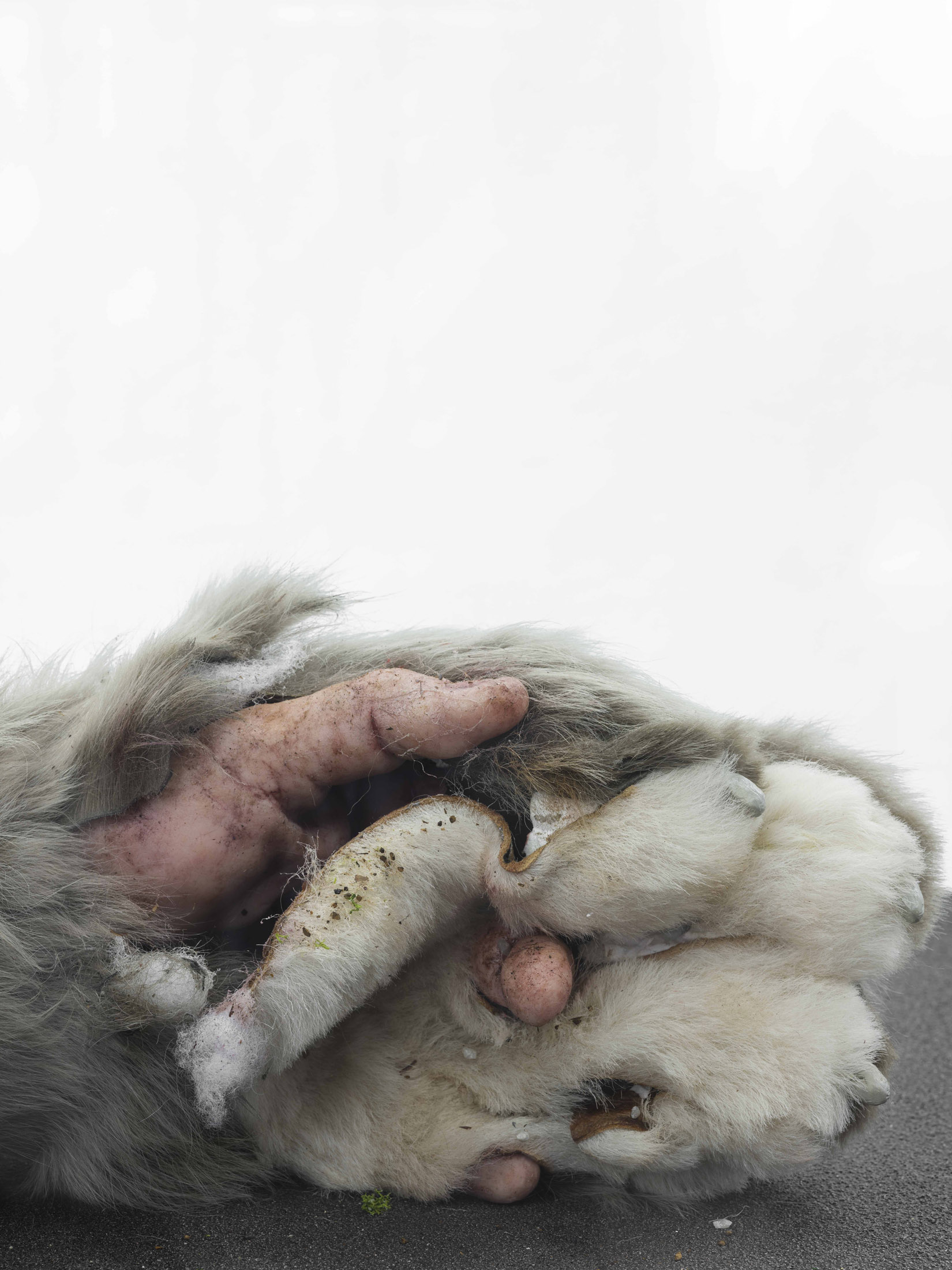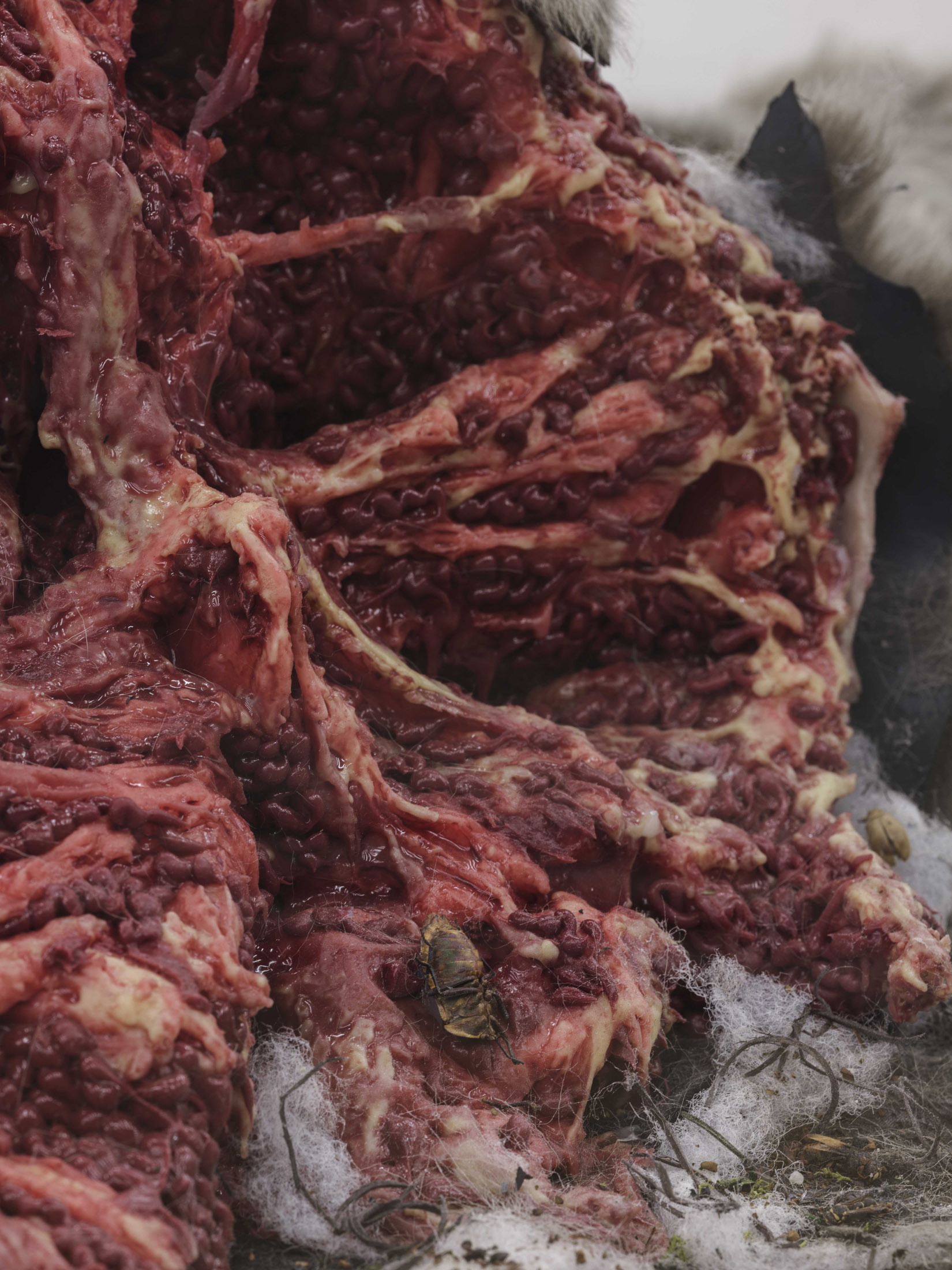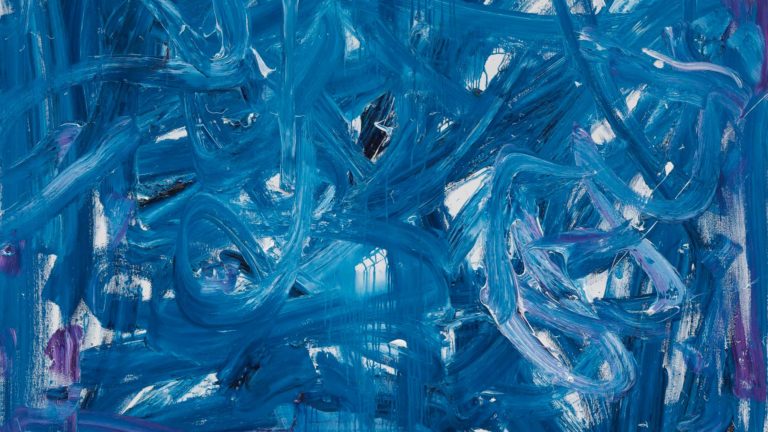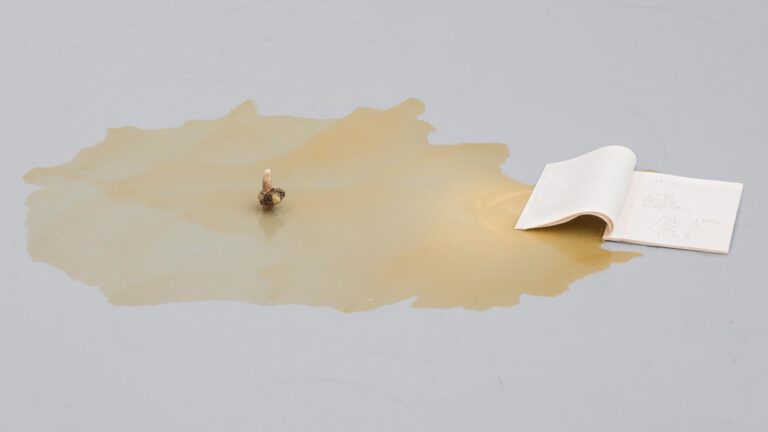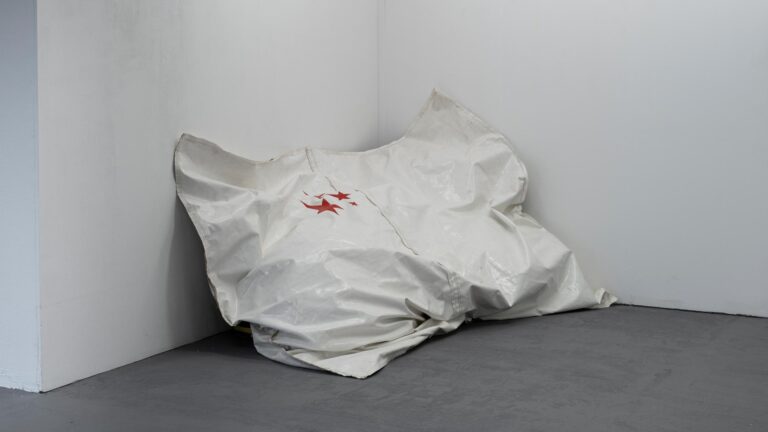Artist: Alessandro Di Pietro
Exhibition title: Ghostwriting Paul Thek: Time Capsules and Reliquaries
Curated by: Peter Benson Miller and Cornelia Mattiacci
Venue: CAN Centre d’Art Neuchâtel, Neuchâtel, Switzerland
Date: September 17 – October 29, 2023
Photography: Sebastian Verdon / all images copyright and courtesy of the artist and CAN Centre d’art Neuchâtel
Ghostwriting Paul Thek: Time Capsules and Reliquaries comprises a film and a series of works conceived in dialogue with the work of Paul Thek (1933–1988). One of the most influential, and yet frequently misunderstood artists of the second half of the twentieth century, Thek, whose close friends included Susan Sontag and Peter Hujar, created visionary works in different media that elude and question the dominant narratives of postwar modernism. His itinerant career, which included extended stays in Italy, was cut short by his death of an AIDS-related illness.
Self-historicization, speculative fiction and ghostwriting animate Alessandro Di Pietro’s imaginative investigation and updating of Thek’s work. Posthumous accounts attempting to historicize Thek’s eccentric output tend to sterilize it with hagiography. Thek’s corpus—his actual body and his body of work, which often overlapped—resists this treatment, despite the best efforts of his admirers.
The disappearance of The Tomb, also called Death of a Hippie, abetted by gaps in the biographical record have underwritten radically different readings on either side of the Atlantic. Their ambiguous interpenetration of fact and fiction propels Di Pietro’s investigation into the artist’s subversive strategies. According to Oliver Shultz, the “fragmentary logic” of Thek’s practice is “not some byproduct of the discursive functioning of history, but rather a quality essential to the work itself.” Embracing this indeterminacy, Di Pietro imagines parallel narratives as phantom vehicles for ruminations on the themes central to Thek’s work.
Chris Kraus, in Aliens & Anorexia, authorizes a form of ghostwriting to make hypothetical musings about the actions and intentions of another person. Drawing on this method and archival sources, Di Pietro identifies himself as Thek in order to animate the grey zones in the artist’s legacy, opening productive gaps by merging third-person historiography with the first-person accounts in Thek’s notebooks.
Di Pietro explains: “My work is based on linguistic structures and cinematic grammars, outlining methodologies that generate new narratives and production strategies through hybrid environments, inhabitants of monstrous plausible characters and non-objective technologies. With this particular project, my intent is to ghostwrite for Paul Thek. I continue his mysterious narratives in my own terms adjusting them to the discourses surrounding today’s history, the socio-political narratives and facts of our time. Therefore my process will be that of imagining how a story, in this case the story of an artist’s work, would have continued if it hadn’t been cut short.”
This exhibition, developed with the support of the Italian Council and in collaboration with the Estate of George Paul Thek, appeared initially at the Watermill Center, Long Island, New York, with a selection of Thek’s works.
—Peter Benson Miller
Credits of RACE OF A HIPPIE:
Film by Alessandro Di Pietro
Project manager: Cornelia Mattiacci
Directed by Alessandro Di Pietro feat. No Text Azienda
Filmed, edited and 3D by No Text, Alvin Sonic, Domenico Nicoletti, Michele Zanotti Sound design and music by A Teardrop Sound, Edoardo Rossano
Voice over text: Piermauro Tamburini, Stella Succi Voice over: Enrico Boccioletti
Textual sources:
Mike Kelley, “Death and Transfiguration: A Letter from America,” in Paul Thek (Turin: Castello di Rivara, 1992); Chris Krauss, “Paul Thek Notebooks” in Aliens and Anorexia (Los Angeles: Semiotext(e), 2000).
Visual sources:
Photographs by Peter Hujar: Tomb Figure with Two Sculptures (1967/2015), Hand Sculpture from The Tomb (1967/2011), Bust of Tomb Figure (1967/2010), pigmented ink prints, 47×32 cm (each); Thek working on the Tomb figure, 1967/2011, pigmented ink print, 32×47 cm, Pace Gallery, New York / Courtesy Peter Hujar Archive. A document made by Paul Thek and Edwin Klein (1969) / Courtesy by Watermill Center; Patrick Vaghi / Fusioni d’arte 3V; Andrea Leanza / ALCFX.
Film excepts from: Matango by Ishirō Honda, 1963 (Toho, Japan) Locations:
Italy: Fondazione Nicola Del Roscio, Rome; Open Care, Milano; Villa Imperiale, Pesaro United States: The Watermill Center, New York
Thanks to:
Alessandra Castelbarco Albani and Marco Di Nallo / Villa Imperiale, Pesaro; Francesca Cattoi; Paola Clerico / Case Chiuse; Ginevra D’Oria; Valeria Ferrari and Alessandro Azzoni / Open Care, Milano; Pietro Gatto; Lucrezia Galeotti; Noah Khoshbin / The Watermill Center; Franca Mancini, Il Teatro degli Artisti; Peter Benson Miller; Edoardo Monti / Palazzo Monti, Brescia; Hedi Sorger / Peter Hujar Archive.

